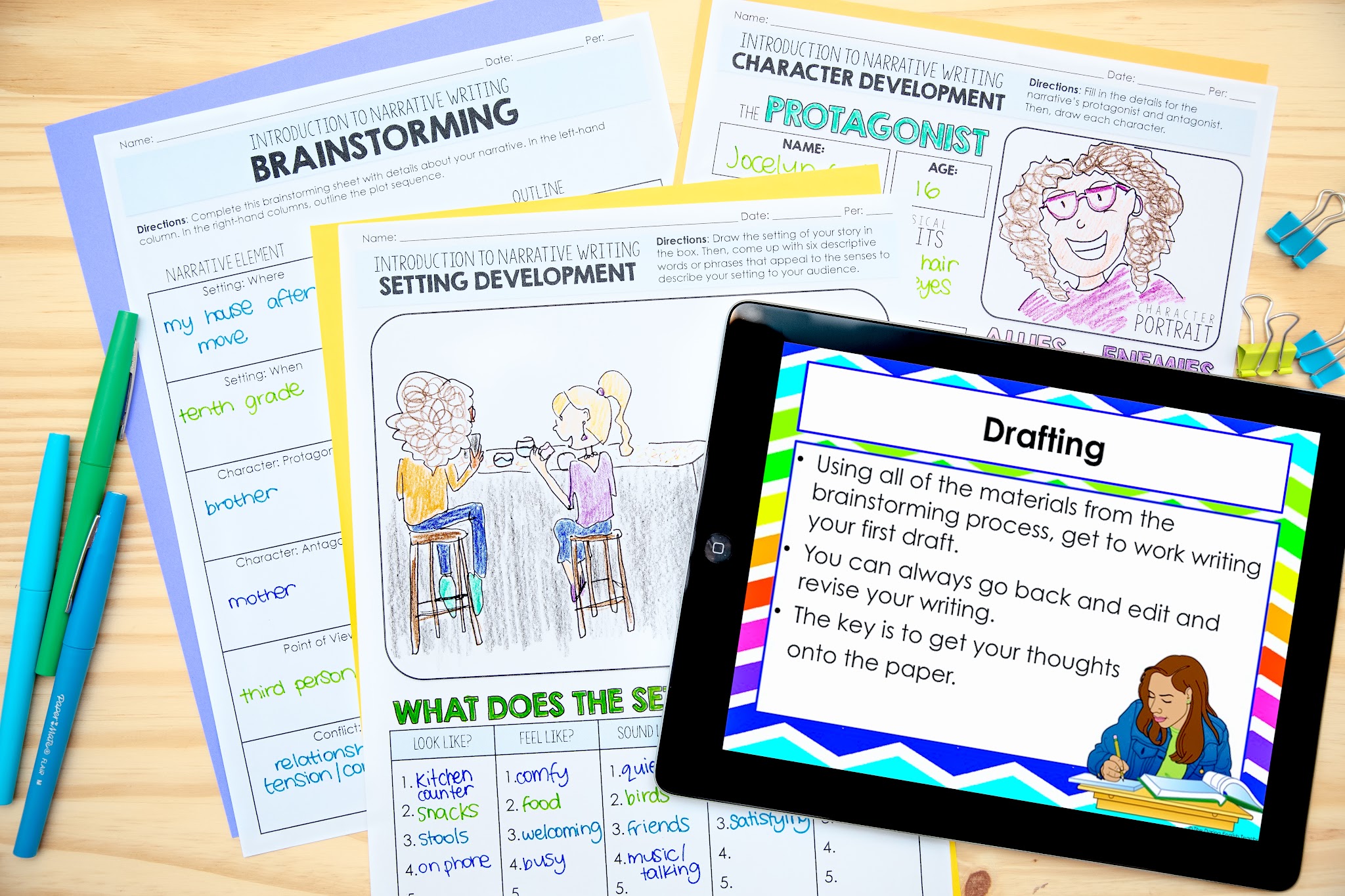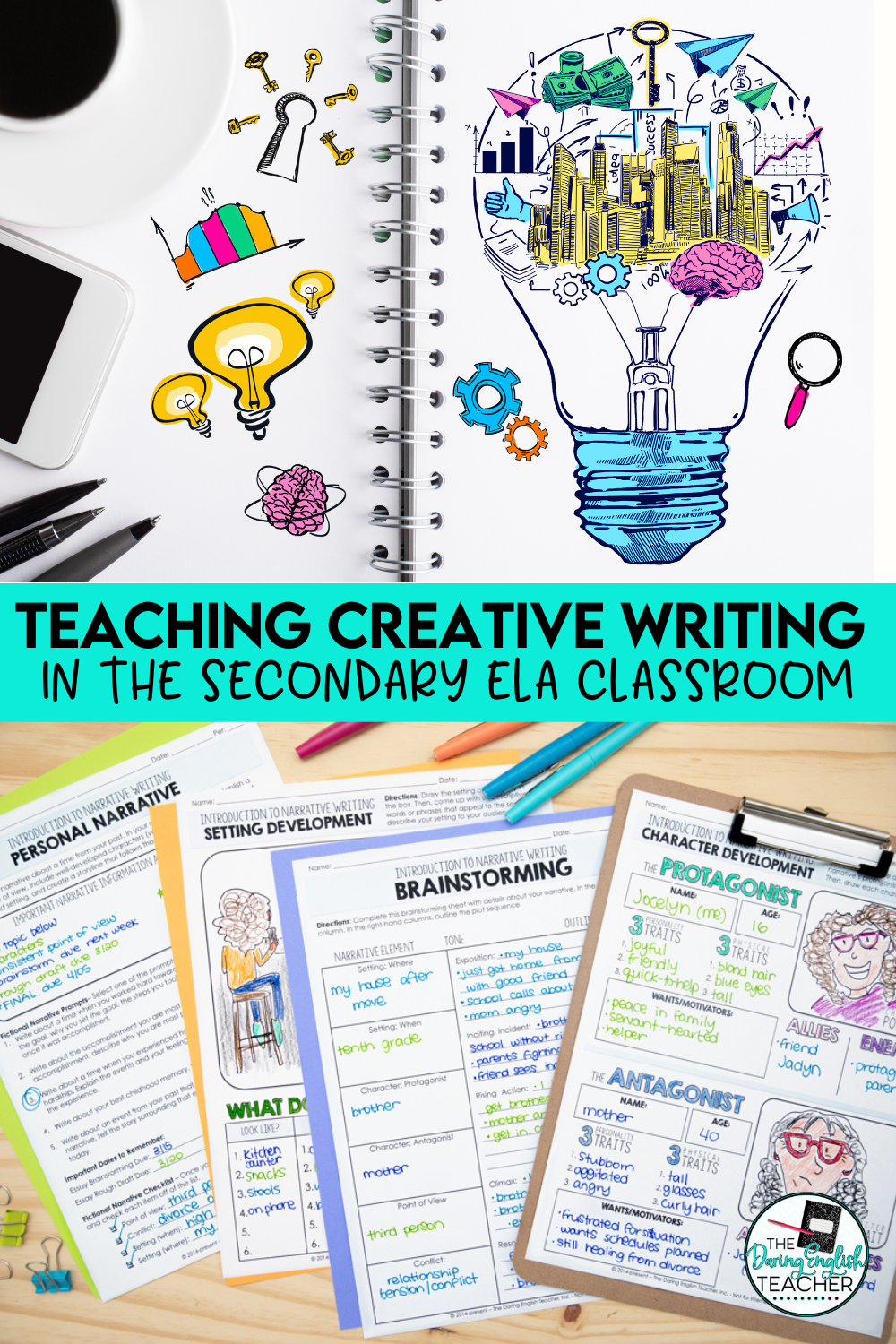Teaching creative writing in the secondary ELA classroom is oftentimes something that gets left out. Between all of the other content -reading novels and nonfiction, writing argument papers and analysis papers, and including vocabulary and grammar- it can be tough to include creative writing. However, it is important to dedicate some time to creative writing. 
Creative writing is a valuable skill that can help students express their ideas, emotions, and experiences in a unique and artistic way. Plus, it helps students access a different part of their brains that require imagination and creativity.
Teaching creative writing can be a rewarding and challenging experience, as it requires a combination of imagination, technique, and guidance.
When I teach creative writing in my classroom, I like to use this Narrative Writing Teaching Unit and assign my students a fictional narrative.
Here are 7 tips for teaching creative writing:
Encourage Freewriting and Brainstorming:
Start your creative writing sessions with freewriting exercises. Freewriting involves writing without worrying about grammar, structure, or correctness. Set a timer (e.g., 5-10 minutes) and ask students to write continuously without stopping. This helps them tap into their subconscious thoughts and ideas. Following freewriting, encourage brainstorming sessions where students share their ideas with each other. This not only fosters creativity but also creates a supportive and collaborative writing environment.
Create a supportive and inclusive learning environment 
It is important for students to feel safe and comfortable in their environment when they begin the creative writing process, as this will allow them to express themselves freely and openly. Create a classroom culture that is conducive to creativity, where students can share their ideas without fear of judgment or criticism.
Encourage students to explore different genres and styles
Creative writing can take many forms, from poetry and short stories to plays and screenplays. Encourage students to experiment with different genres and styles, and try out new approaches and techniques.
To try to engage student in creative writing, there are many different avenues to take. One of the most accessible poetry assignments I assign my students is an Epistolary Poem. We read Kobe Bryant’s poem “Dear Basketball,” and then students write their own poem.
Provide examples and models of good writing
Students can learn a lot by studying the works of established authors. Share examples of well-written stories, poems, and other creative works with your students, and discuss the elements that make them effective.
Encourage regular writing and revision
The key to good writing is practice and revision. Encourage your students to write regularly, and provide feedback and guidance on their work. Help them develop their ideas and improve their writing through revision and editing.
Support self-expression and individuality
Creative writing is a personal and individual art form, and it is important to support students’ unique voices and styles. Encourage your students to be authentic and original in their writing, and celebrate their individuality and creativity.
Offer Constructive Feedback and Revision Opportunities:
Constructive feedback is crucial for a writer’s growth. Instead of focusing solely on correcting errors, provide feedback that highlights strengths and suggests areas for improvement. Encourage peer review sessions, where students can share their work and receive constructive comments from their peers. Additionally, emphasize the importance of revision.
Writing is a process, and the first draft is rarely perfect. Teach students to embrace the revision process as an opportunity to refine and enhance their work. This not only improves their writing skills but also instills a sense of persistence and resilience in the face of challenges.


